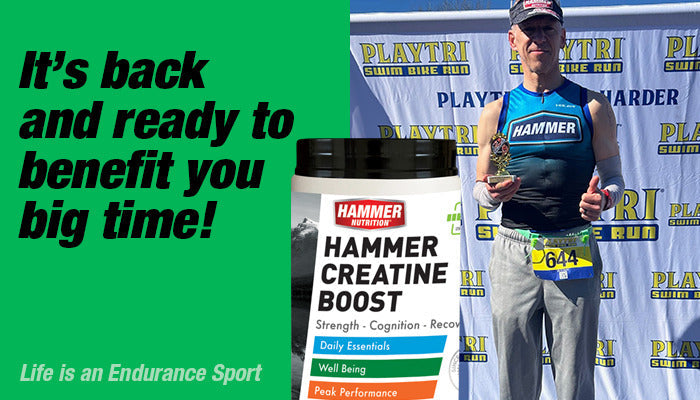Brian Frank’s Cardio Sandwich
BY BRIAN FRANK
Usage Instructions: 3-4 times per week, year-round!
I started lifting when I was 18. At the same time, I got very serious about cycling and have continued to go to the gym regularly for upper-body strength to complement my endurance training, which is mostly lower-body–cycling. I use this for cross-training for moto trials, which require equal amounts of strength, endurance, and mental focus. In addition to cycling or riding 5-6 days per week, I try to get into the gym at least three times per week. The following workout routine is what I have distilled down from all of my studies on the subject and practiced over the past 38 years.
Start with 5-30 minutes of cardio, do an upper body free weight routine, and finish the workout with 5-30 minutes. This allows the workout length to be increased or decreased, depending on time available and other training.
Cardio options – stationary bike, concept 2 rowing ergo, stair climber, elliptical. (Treadmill/running not encouraged.)
1st Cardio session: needed to get the heart rate up and blood flowing. It should be done for at least 5 minutes or until you break a good sweat. When outdoor cycling/moto is not happening regularly (wintertime), increase the cardio duration to 15-30 minutes to burn more calories.
Weights: Due to the amount of cycling I do and how bad my knees are, I refrain from engaging in resistance/strength training for my lower body. Also, I don’t like to have huge legs, and things like squats, deadlifts, and the like are a great way to injure one’s back. I only do resistance/strength training for upper body muscles for many reasons.
Free Weights and body weight: For the first 3-6 months of structured workouts, use only free weights and bodyweight exercises. Save barbells and machines for later. Free weights are used to develop all supporting/stabilizing muscles, tendons, and ligaments, in addition to the major muscle groups. The former takes longer to develop than the latter. Exercises like pull-ups and dips should be employed regularly for lats and pecs as the body responds fastest to bodyweight-supported exercises.
Strict form while doing resistance training routines is a must, always. Use lighter weights with strict form instead of heavy weights and poor form. The former produces the best results, and the latter causes injuries.
The format for weightlifting follows the size of the muscles – big ones first, little ones last. Chest (pectorals), back (latissimus), and then arms/shoulders (triceps, biceps, deltoids.) Abs and back can be done at any point during the workout.
2nd Cardio session: Cardio options – stationary bike, concept 2 rowing ergo, stair climber, elliptical. (Treadmill/running not encouraged.) After you have completed your upper body weight routine, keep the calorie/fat burn going with a second round of cardio for another 5-30 minutes.
Adaptation: This is the most important and ignored aspect of long-term strength training. You will make the most gains in your entire life in the first six months of following a steady workout routine. Continuing to make gains from that point will only come if routines are changed regularly. The body will only adapt as much as it needs to meet the workload it expects. This is why within the outline of this workout, every muscle should be worked in as many different ways as possible. Varying the number of reps, sets, types of exercise, speed of each rep, and rest time between sets. These must all be changed up every couple of weeks to avoid stagnation. Examples of this will be given below.
Periodization: the final key. Traditional bodybuilding includes the concept of three-month or 12-week cycles that are then broken down into 2–4-week cycles. In each cycle, the number of reps, amount of weight used, number of sets performed, and rest time between sets are altered to force continual adaptation, which translates into growth, strength, and size increase.
Examples of Free Weight Exercises
Building a Workout
The idea is, to begin with a cardio workout as described above, then add your upper body strength routine before finishing with another cardio segment. Begin with compound exercises that work a major and minor muscle group, then continue with muscle isolation exercises that only work one muscle at a time.
Chest/Arms/Shoulders and all supporting muscles:
(Pectorals/triceps/deltoids) are all worked together with exercises such as push-ups, dips, prone dumbbell/bar presses, and similar variations. Alternate between prone, incline, and decline to force further adaptation and growth of all areas of the muscles.
Perform 3-6 sets of compound exercises with weights heavy enough to make a 12-rep set difficult in the last 4 reps. See sample workouts below.
- Deltoid/tricep combo – military presses
Compound exercises are followed by isolation exercises. Usually, only do 3 sets of isolation exercises to avoid overworking the muscle, especially true of the biceps!!!
- Pec flies (strict form, prone, incline, decline.)
- Triceps presses downs, overhead, etc.
- Deltoid isolation-standing side front and rear deltoid raises.
- Back/Arms/shoulders (lats, biceps, deltoids) and all supporting muscles-pull-ups, lat pull-downs, low rows, and all other variations.
- Lat isolation exercises – Straight arm pushdowns/pullovers, landmine rows, dumbbell pullovers.
- Biceps isolation exercises- (dumbbell curls, etc., add more here).
- Abdominals/Core: 3-6 sets of exercises of your choice – sit-ups, leg raises, etc.
- Back/Core- back extension with or without weights on Roman Chair bench.
Sample Workout
Sample workout (intense, short rest periods):
- Duration- approximately one hour.
- 15 minutes on a stationary bike with a heart rate over 100.
- Abs/back super sets, 3 each, 30 seconds rest between each double set, 12-15 reps per set.
- Chest/tri/delts – 4 sets of prone dumbbell presses, 30 seconds rest in between, 12-15 rep sets.
- Pec flies – 3 sets, light weights, strict form.
After you have completed your upper body weight routine, keep the calorie/fat burn going with a second cardio segment of 5 to 30 minutes.
Recovery:
- Cool down, do light stretching, and hit the showers.
-
7 Recovery Tips for Your Toughest Workouts – Check out this Article!
1. Consume a double serving (four scoops) of Recoverite right after the workout's done!
2. Take one capsule each of Chromium GTF and Essential Mg with your Recoverite!
3. Take one capsule of Boron with your Recoverite!
4. Resupply vitamins with Premium Insurance CAPS!
5. Take this trio to help put the fire out! Tissue Rejuvenator, AO Booster, EndurOmega!
6. Use different types of Hammer CBD!
7. Consume one scoop of Hammer Whey Protein prior to bedtime!











17 comments
Love the suggestions thanks! When is the ideal time to up the recoverite from 2 to 4 scoops?
———
Hammer Nutrition replied:
Hi Mike, Thank you for your question! A 4 scoop “double serving” immediately post workout can be employed after hard workouts/heavy sets and or when you know it’s going be more than 1-2 hours before you sit down to eat a meal. BDF
Thanks Brian! Your advice has become practice for me. Though I use a TRX for my upper body work I have followed your recommendations as closely as possible. At 77 it isn’t as easy as it once was but I do persist. Hammering on through life!
———
Hammer Nutrition replied:
Hello Breese, thank you for the affirmation and encouragement!! I’m a big fan of bodyweight exercises like pull ups and push ups, and TRX is great too! BDF
1/23/2025: Great article. At 82 I can attest the use it or lose it theory is true.
Question: Why does Hammer not recommend or offer Collagen as an important supplement to maintain joint health?
———
Hammer Nutrition replied:
Hi Tony, Thank you for your comment and question. For joint and connective tissue support, Tissue Rejuvenator is tops and features – undenatured type II collagen. Up until now, we’ve avoided the “me too” collagen powders that are on every street corner these days. However, we are working on a “new and improved” collagen product and hope to have it available later this year. BDF
Go get ‘em Brian. You’re the man.
———
Hammer Nutrition replied:
Hi Dean, Kalispera! Thank you for your tireless support and encouragement. I hope Greek life is treating you well, looking forward to reading about your next adventure! BDF
I’m a marathoner. I’ve started incorporating body weight and weight training into my routine a few times a week. I was surprised to find how much a stronger core helps in running. For years, many people told me “it’s all legs.” WRONG! A strong back and core is crucial for good running.
On another note, I’ve recently made a change in my routine. I used to have an Ensure Max Protein after my runs as a protein shake. I recently switched to Hammer Whey Protein (the chocolate is delicious). I’ve noticed better recovery.
Hammer on everyone!
———
Hammer Nutrition replied:
Hello Kevin, Thank you for your thorough feedback and sharing your journey, as well as the nice product mention. Likewise, keep hammering, we’ll be here to help. BDF